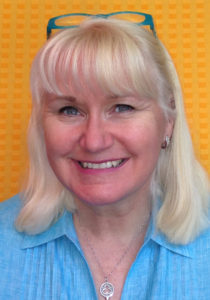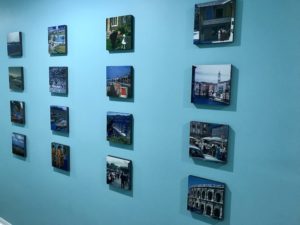This month I’m thrilled to present the insights of genealogical adventurer and storyteller (don’t you love that description?) Megan Smolenyak Smolenyak. Megan is well known as a writer, speaker and TV guest and is the author of six books, most recently Hey, America, Your Roots Are Showing and Who Do You Think You Are?: The Essential Guide to Tracing Your Family History, the companion guide to the TV series. Her personality shines through in this interview. Enjoy!
 How They Do It: Megan Smolenyak
How They Do It: Megan Smolenyak
How long have you been doing genealogy?
I’ve been doing genealogy since a 6th grade homework assignment got me started, so decades now!
What’s your favorite thing about being a genealogist?
I get to wake up every day and play detective to help other people. That’s pretty great, isn’t it? I love the thrill of the hunt, and playing at the fringes. That’s why I was one of the first to play with DNA, use genealogy for forensic purposes (e.g., military identifications, FBI civil rights cold cases, coroners’ offices, etc.), produce roots-oriented videos, and so forth. I like experimenting to find different ways to apply genealogical research and hopefully wind up doing some good.
What’s your biggest challenge when it comes to organizing your genealogy?
My biggest challenge organization-wise is my personal research. I’m quite organized when it comes to others’ family history, but not so much with my own. I don’t get much time to play with it, but suffice it to say, I have decades of research in a variety of formats.
What is your favorite technology tool for genealogy?
I wouldn’t say they’re my favorite, but more the toys I’m playing with lately. I’ve been pondering recently how to ensure that my personal research survives me, and since there are no keen genealogists among my close family members, I’ve been looking for ways to share what I’ve learned in ways that relatives might find half-way interesting. So I’ve been experimenting with what you might call distribution tools.
For instance, I have lots of my father’s slides from our time living in Europe, so I selected and edited some and now have a display along a long hallway. To do that, I used the Mixtiles app, and what’s great about it is that each “tile” can be applied and removed multiple times, so I can rotate the content over time. Then I took it a step further and made a slender book of these same slides using Blurb and sent copies to my dad and siblings.
If you were starting out new as a genealogist what would you do differently?
When I first shifted careers to genealogy, I said ‘yes’ to every opportunity that came my way, and I would still do that again today. That said, I should have started turning down some invitations earlier than I did. While I’m beyond grateful for all the opportunities that have come my way, I got myself over-obligated and it took years to dig out.
Do you keep a research log? If so, what format?
It depends on the project and scale, but for the most part, conventional research logs in good, old-fashioned Word. And I’m a big fan of white boards when juggling multiple sub-projects (e.g., orchestrating research for a TV season). I once worked in a place that had an entire wall made of white board and I’d love to have that again!
How do you keep track of clues or ideas for further research?
Again, fairly old school. For instance, a dedicated notebook for a particular project. Or a generic notebook for multiple projects where I scribble ideas and then create an on-going table of contents (from the back of the notebook in) so I can easily find what I’m looking for (color-coding often comes into play). Sometimes I’ll append pages for this purpose to a research log. Also, for those times when I trip across cool new sites I want to explore, but know I’ll get distracted by, I’ll add them into a slot in my calendar app and then give myself time – usually a random Friday afternoon – to play with several at once.
What’s the most important thing you do to prepare for a research trip?
Homework, homework, homework. I explore the websites of all the repositories I plan to go to and dig into their catalogs, online collections, and the like so I know exactly what’s necessary and exactly what’s possible. I’ll often wind up back-and-forthing with an archivist or librarian in advance – sometimes to have materials waiting, perhaps to clarify details about a particular collection, or maybe to pick their brains for further ideas. I recently did this for a research trip to the Archives of Macau, and it saved so much time – not to mention, gave me some gems I probably wouldn’t have found on my own.
What’s your biggest piece of advice to genealogists in terms of organizing their research?
This is probably a blinding flash of the obvious, but get yourself organized when you’re first starting out. Form those habits early. If nothing else, you will save yourself so much re-work by not constantly re-inventing your research trail.
Do you have a dedicated space in your home for doing genealogy research? What’s it like?
Yes, since I’ve been a professional genealogist for two decades now, I’ve always had a dedicated room for my office wherever we lived (Virginia, New Jersey and Florida so far), and they’ve all had their own vibe. My current one is lighter and airier than in the past – partly due to digitization reducing the need for filing cabinets and other storage. I have a large sit/stand desk (very reasonable at IKEA), a filing credenza, a bookcase, and a utility cart (IKEA again) and library cart (Demco caters to libraries, but sells to individuals) – the last two for current projects. I also have a sleeper ottoman (that’s hardly ever been opened into a bed) where visitors can plop themselves down and get comfortable. The walls are light teal, the furniture is mostly white, and there’s lots of colorful art. So all that, terrific views and Mixtiles. More Mixtiles.
I love Megan’s light-hearted, but wise, responses and this peek into the organizational life of such an experienced genealogist. I had never of Mixtiles and excited to explore more! Thank you so much, Megan, for sharing!

